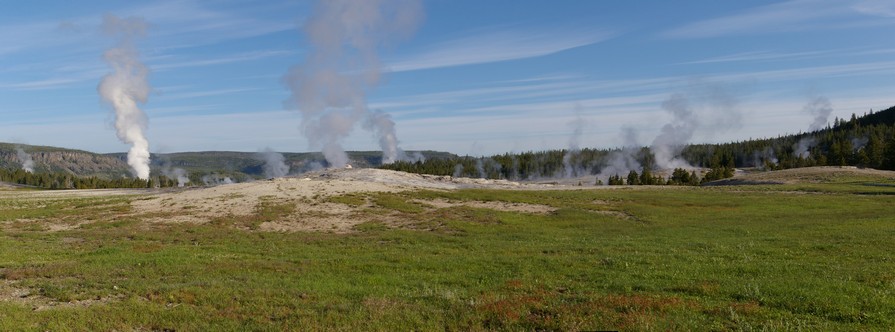 Standing in the caldera of the Yellowstone volcano is an interesting experience. While all the evidence speaks to the fact that something is stirring not far below the surface, the traditional shape is missing and the rim hard to discern. Much has been written about the geological processes at play and even more about the probability, timing and consequences of another eruption: there are theories but no more at this stage. None of this detracts from the fascination of the headline-grabbing hydrothermal features of Yellowstone National Park.
Standing in the caldera of the Yellowstone volcano is an interesting experience. While all the evidence speaks to the fact that something is stirring not far below the surface, the traditional shape is missing and the rim hard to discern. Much has been written about the geological processes at play and even more about the probability, timing and consequences of another eruption: there are theories but no more at this stage. None of this detracts from the fascination of the headline-grabbing hydrothermal features of Yellowstone National Park.
In the cold morning air, plumes of steam rise across the landscape reducing visibility to a matter of feet in areas where the springs and fumaroles are densest. The smell of sulphur wafts in the light breeze, a clear olfactory reminder of the processes underfoot. We’re up early to see Old Faithful blow before the viewing area is overrun with too many people. We get there at seven and settle down to wait. It may be a somewhat hackneyed focal point of the park but we have to see it nonetheless. While it may be faithful it’s not quite as regular as the name implies: given no-one monitors the intervals between the geyser blowing overnight all we know is we probably won’t have to wait more than an hour and a half. It’s twelve minutes past eight when the action starts and it’s worth the wait. The photos can’t capture the vitality but the video gives some hint of the energy involved. It’s captivating and another vivid reminder of the forces stirring.
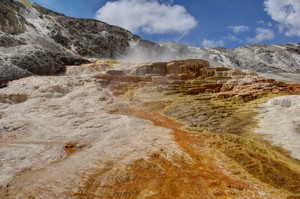 Further north, the multi-coloured terraces at Mammoth Hot Springs sparkle in the sun as the hot water cascades across the steps. Steam swirls in the air, parting to reveal the milky blue waters of springs edged with white crystals and surrounded by a spectrum of rusty shades.
Further north, the multi-coloured terraces at Mammoth Hot Springs sparkle in the sun as the hot water cascades across the steps. Steam swirls in the air, parting to reveal the milky blue waters of springs edged with white crystals and surrounded by a spectrum of rusty shades.
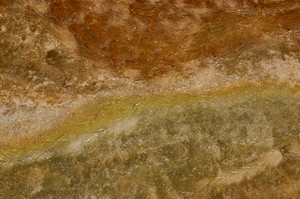 Life thrives here, heat-loving microorganisms creating the various colours on display from the yellows and whites to the orangey browns and greens. The surreal abounds: the eyes struggle to order the intricate patterns of minerals deposited by the slightly acidic water and on a wider scale the brain attempts to process the bizarre mixtures of colour and texture. It is a place provoking amazement and wonder where time passes unnoticed, our attention absorbed in the numerous fascinating aspects of this other worldliness.
Life thrives here, heat-loving microorganisms creating the various colours on display from the yellows and whites to the orangey browns and greens. The surreal abounds: the eyes struggle to order the intricate patterns of minerals deposited by the slightly acidic water and on a wider scale the brain attempts to process the bizarre mixtures of colour and texture. It is a place provoking amazement and wonder where time passes unnoticed, our attention absorbed in the numerous fascinating aspects of this other worldliness.
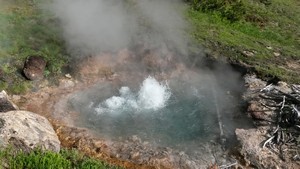
In the Artists Paintpots area, a mudpot splutters, spits and bubbles as gasses rise to the surface through the thick, smooth clay. It’s not actually boiling but gives a good imitation: the surface broken by small blobs of clay being shot into the air, the splats of their return creating a wonderful soundtrack. It’s mesmeric and we stand captivated for a considerable time. Further along the boardwalk the same forces are at work in a pool of water giving the appearance of a fierce rolling boil.
 Of all the wonderful aspects of the park, the Grand Prismatic Spring stands out. The bright orange curves and swirls emanating from the yellow edged vivid blues of the pool are stunning, the richness of the water colour reflected in the steam rising from its surface. We lose ourselves in the stunning colours and shapes, overwhelmed by the beauty.
Of all the wonderful aspects of the park, the Grand Prismatic Spring stands out. The bright orange curves and swirls emanating from the yellow edged vivid blues of the pool are stunning, the richness of the water colour reflected in the steam rising from its surface. We lose ourselves in the stunning colours and shapes, overwhelmed by the beauty.
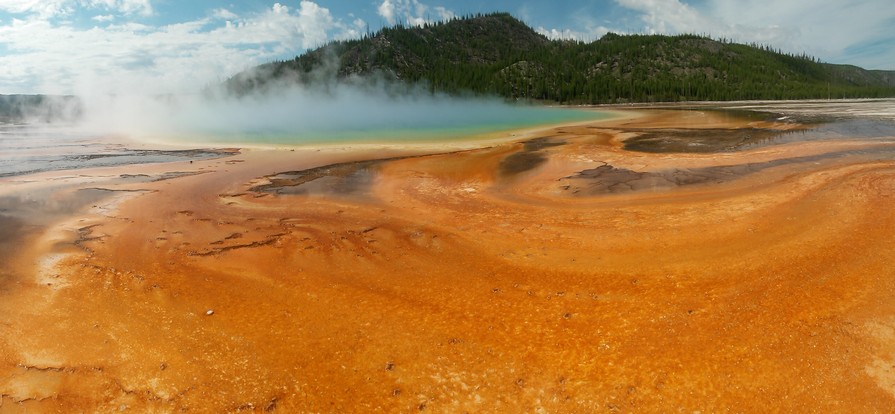
Beneath the surface of Yellowstone Lake the same hydrothermal processes are very much at work creating warm waters where trout proliferate. From a look out point on the Elephant Back Mountain trail the wonderful blue waters of the lake stretch out below, snow capped mountains creating the horizon beneath the paler blue sky. It’s quiet, still and incredibly peaceful as we eat our lunch feasting on the view.

We get a different perspective later in the afternoon as we walk the short Storm Point trail along the lake shore. The overwhelming blueness of water and sky continue to dominate while the reds of flowering grasses, aqua greens of the lake edge and purple mineral deposits on the bluffs add to the richness of the experience.